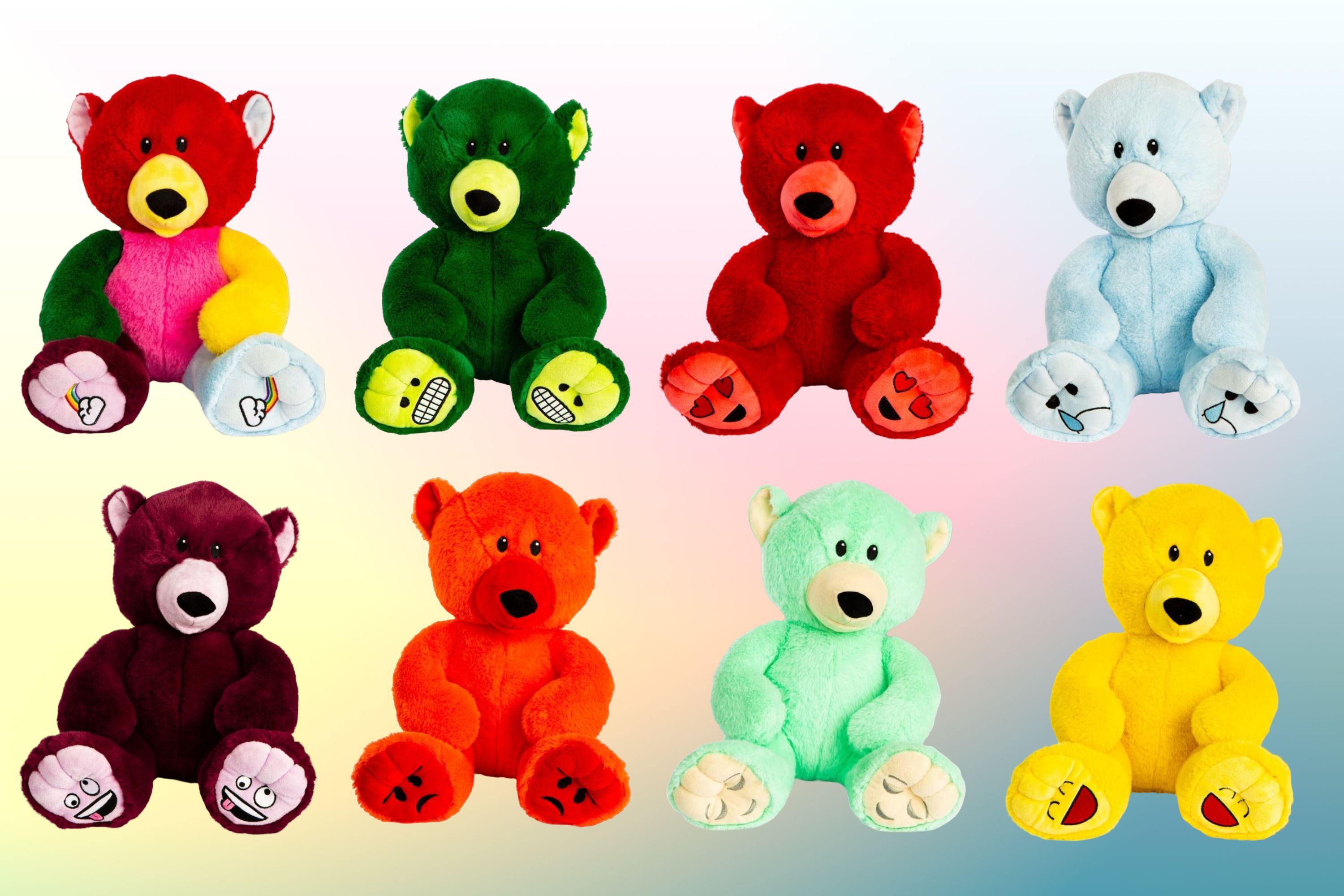
It can be incredibly difficult for children (and let's be honest, adults) to understand and articulate what they are feeling. But often, in order to manage those feelings, children and adults alike need to be able to express them. But where do you start?
For parents, knowing how to talk about children's mental health can help, as can recognising the signs of anxiety. But with the importance on mental health much more front and centre than it has been for previous generations - there's even a character called Anxiety in the new Disney Inside Out 2 movie - there are more tools available than ever before to help parents and children find it easier to talk about their feelings.
Let's take Mood Bears for example.
What are Mood Bears?
Mood Bears are plush toys that have been specifically designed to help support mental health and wellbeing. Suitable for children and adults alike, there are eight Mood Bears to collect, each with its own distinctive colour (which is based on the principles of colour psychology), and its paws feature a design that depicts the mood they represent.
These colours and designs can help children to use the bears as visual cues to express how they are feeling when they don't quite have the vocabulary to articulate it. The bears can also be used as an educational tool to teach children about feelings and moods, giving them the tools they need to better understand their emotions.
- Angry Bear is a bright, fiery orange
- Hope Bear is multicoloured with all the shades of the other bears
- Calm Bear is a calming pale green
- Silly Bear is a deep berry
- Sad Bear is a cool, sky blue
- Happy Bear is a bright, sunshine yellow
- Love Bear is a warm red
- Nervous Bear is a dark green to help calm feelings of worry
Mood Bears are available in two different sizes, mini and large, and are not only made from recycled materials, but are also 100% recyclable. They are suitable for kids aged three and over and are machine washable (we can hear that sign of relief, parents!)
Launched in 2019, the bears are designed by Mood Bears founder Joanna Proud, based on doodles she drew when struggling with her own mental health. Looking for investment in the Mood Bears company, Joanna made her pitch in the Dragon's Den, winning over, and securing investment from, all five dragons, including Deborah Meaden, Peter Jones, Sara Davies, Steven Bartlett and Touker Suleyman.
Why Mood Bears are a good idea for children
According to a new survey commissioned by the NSPCC, 75 per cent of UK parents with children under five are anxious about their child's emotional and mental wellbeing. And so finding tools that can help children understand and express the complex emotions they feel can only be a good thing.
As well as providing a visual cue to help a child learn and explain how they are feeling, Mood Bears can also represent a reassuring and non-judgemental safe place and trusted ear for anyone who doesn't feel ready to share their feelings. And for anyone not ready to talk, they are always there for a cuddle.
GoodtoKnow's Family Editor Stephanie Lowe says: "Emotions are something that happen to us. We can't really explain it, but it's there inside us. So it's really tricky describing the concept to kids.
"Teaching kids about emotions is step one in helping them to learn to regulate and for you - their grown-up - to coregulate with them. Having that cuddly toy is something tangible that kids can hold and show how they're feeling. Kids (and adults) don't always have the words when they're flooded with emotion, so making sure they have an outlet - like the Mood Bears - is really helpful."
In other toy news, in honour of Peppa Pig's 20th anniversary, we've rounded up the best Peppa Pig toys you can buy. We've also taken a look at the Squishmallow alternatives that are giving 2023's bestselling toy a run for its money, and reveal this year's top toys.







